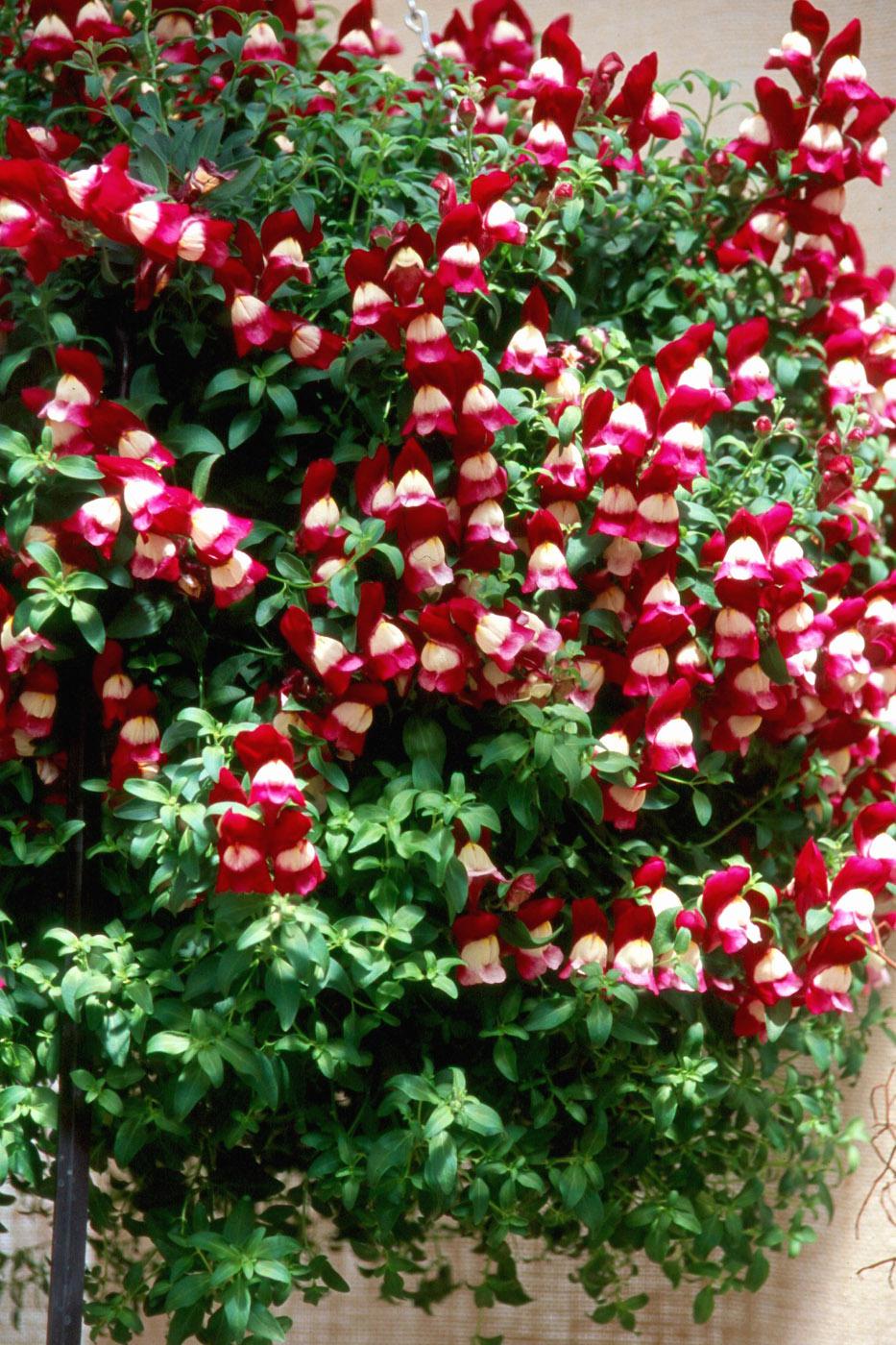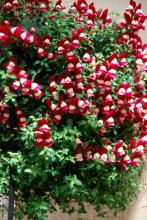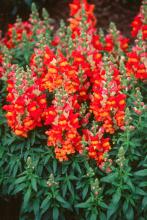Information Possibly Outdated
The information presented on this page was originally released on November 17, 2005. It may not be outdated, but please search our site for more current information. If you plan to quote or reference this information in a publication, please check with the Extension specialist or author before proceeding.
Snapdragons yield cool color options
By Norman Winter
MSU Horticulturist
Central Mississippi Research & Extension Center
As exciting as the new pansies have been, 2005 was also a great year for new snapdragons. Our growers hit the target with the highest quality snaps I have ever seen. Garden centers tell me the snapdragons seemed earlier and created steady sales to enthusiastic customers.
Pan American Seed introduced the new Snapshot series this year. These are considered dwarf size reaching 6 to 10 inches tall, but they also spread outward 10 to 14 inches. The Snapshot snapdragons are available in eight colors and two mixes and have some of the most vibrant colors you will ever see in the cool-season landscape.
One of the most photographed plants at the trials this year was a new trailing snap from Ball FloraPlant called Sugarplum. Sugarplum is in the Luminaire series and is ideally suited in hanging baskets. They fill out a basket with incredible vigor and are certainly showy enough to be a stand-alone plant.
Its trailing habit lends itself to being used in mixed containers where you combine it with upright plants like a tall dianthus, flowering kale, asparagus fern and pansies. The Sugar Plum is plum purple, so combine it with white and yellow for a truly eye-catching combination.
S & G Seed has gained notoriety for their snapdragons with the introduction of the Montego series that reaches 12 inches tall. My favorite new selection this year is the Montego Orange bi-color that is an iridescent orange and yellow.
Keep your eyes open to see if any of the Crown series shows up. The crown series is also from S & G and is taller, reaching 15 to 18 inches tall. This year they have introduced a knockout selection called Candy Corn. It does look good enough to eat, but if you ever find it for sale, you will want it in the landscape because I promise you will be the envy of the neighborhood.
The snapdragon is native to Europe and the Mediterranean and is known botanically as Antirrhinum majus. The trailing snapdragons are a result of a cross with A. molle and A. hispanicum from Spain, giving them even more resiliency.
When it comes to snapdragons, bed preparation will pay off. Select a site in full sun for best bloom production. Incorporate 3 to 4 inches of organic matter along with 2 pounds of a slow-release, 12-6-6 fertilizer per 100 square feet of planting area.
Space transplants as recommended. This may mean some selections, like Rockets, should go toward the back of the border, and others like the Montegos or Snapshots, up front. Apply a good layer of mulch to keep soil temperatures moderate and give added winter protection.
Deadhead snapdragons to keep them tidy and blooming. If unusually cold weather is forecasted, completely cover them with pine straw until the temperatures have moderated.
Pay attention to moisture levels now and during the winter. While soggy feet can be lethal, many cold fronts in the South dry out beds to a severe level. As growth becomes more active in late winter or early spring, side dress with a light application of fertilizer.
There are a lot of snapdragon varieties on the market, but you may not find the ones I mentioned. Rest assured that varieties such as Rockets, Sonnets, Liberty Classics, Solstice and Ribbons are all worth planting and will make your cool-season landscape come alive with color.




